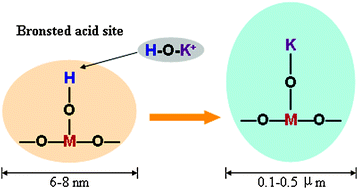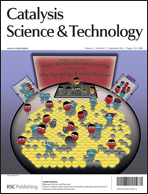Deactivation mechanism of potassium additives on Ti0.8Zr0.2Ce0.2O2.4 for NH3-SCR of NO
Abstract
Potassium additives slightly decreased catalytic activity for NH3-SCR of NO when the mass amount of K2O was less than 1.0%, but dramatically decreased the catalytic activity when the mass amount of K2O was more than 3.0%. The deactivation mechanism was that potassium additives directly decreased the specific surface area, the total acid amount and the acid strength of the strong acid sites, and induced the KCl-rich crystallization and the formation of non-active K2ZrO3, K2TiO3 and K2CeO3.


 Please wait while we load your content...
Please wait while we load your content...